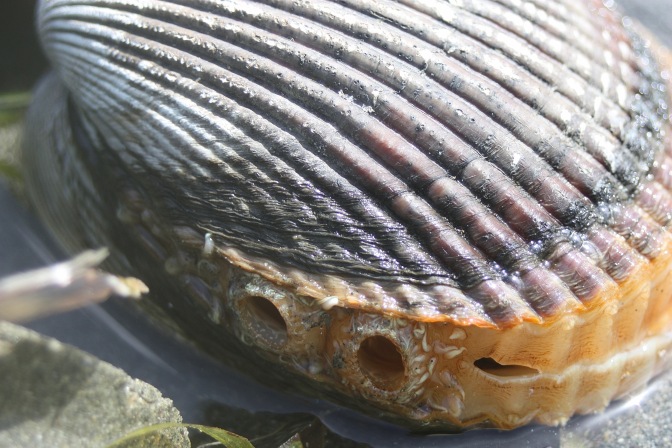
This chunky bivalve is easy to find. It is also called a “heart cockle.” Turn it sideways and see if you can see the heart shape.
Look at the extraordinary design where the two shells come together. This curvy edge makes it harder for predators to reach the soft animal inside.
Watch for cockles that are partially open. See if you can find the valves, as well as the strong muscle that will quickly snap the shell closed if disturbed.
Locals might tell you to watch for cockle “eyes” sticking up from the sand, especially when the tide is coming in. They are not eyes at all, but rather the cockle’s two siphons protruding from the sand.
Cockles were an important food source for native people, who prepared them like clams. To harvest them, the gatherer would tap a stick next to the protruding eyes, hoping that the cockle would grab it, making it easy to lift out of the sand.
![]()

For more information about Cockles as food, check out Traditional Animals Foods of Indigenous Peoples
Although PNW natives called the siphons ‘eyes’, they are not
LikeLike
Greg, thanks for this correction. Siphons with periscope eyes would be a fun tale to tell, but in the interest of accuracy, the text will be changed. I’ll have a little chuckle the next time I see a cockle on the beach. Thanks again.
LikeLike